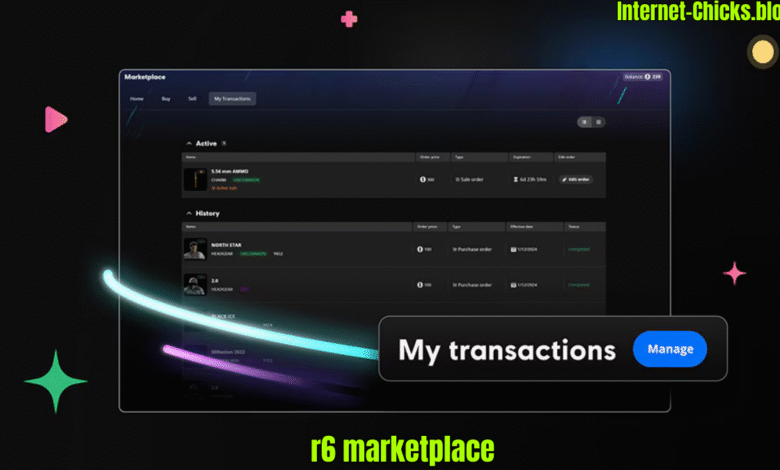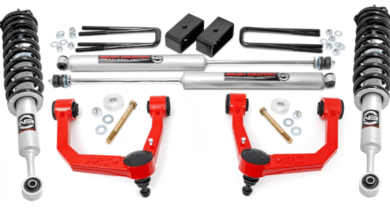R6 Marketplace: The Complete Expert Guide for Rainbow Six Siege Enthusiasts

Introduction to the R6 Marketplace
If you’ve been part of the Rainbow Six Siege (R6) community for a while, you’ve likely come across the term’ R6 marketplace.’ It’s not just about in-game skins; it’s a vibrant economy that adds a new dimension to Ubisoft’s successful tactical shooter. Beyond the thrill of breaching doors and winning clutch rounds, it’s about the pride and personalization that come from owning rare cosmetics, exclusive weapon skins, and unique charms. The marketplace is where these items circulate, and understanding it can give you a serious edge in terms of both collecting and trading. It’s a shared passion that unites us all.
What makes the R6 marketplace particularly fascinating is that it straddles the line between gaming culture and digital economies. On one hand, it’s a place for players to express themselves through cosmetics, while on the other hand, it introduces concepts of value, rarity, and demand—much like a real-world market. Skins and items might not make you a better shot, but they definitely add style and personality to your operator. The pride of showing off a rare Black Ice skin, for example, is unmatched. This shared experience of hunting for rare items and the sense of community recognition they bring is a significant part of what makes the R6 marketplace so engaging for players.
In this guide, we’re going to dive deep into the concept of the R6 marketplace. We’ll break down what it actually is, how it works, what items players are after, how third-party platforms fit in, and even how scams can be avoided. Think of this as your ultimate handbook—written casually, but with the expertise of someone who’s seen the ups and downs of the Siege community.
What is the R6 Marketplace?
At its core, the csmn.media refers to any platform, environment, or community where Rainbow Six Siege players can buy, sell, or trade items related to the game. Ubisoft itself doesn’t provide a direct, Steam-like marketplace for player-to-player trades, so much of what’s considered the “R6 marketplace” exists either within Ubisoft’s official in-game ecosystem (through packs, renown purchases, or R6 Credits) or through third-party sites and communities where accounts and cosmetic bundles are exchanged.
It’s essential to make the distinction: there isn’t a single, centralized “R6 marketplace” controlled by Ubisoft in the way Valve runs the CS: GO Steam Community Market. Instead, the term has grown into a collective way of describing how players interact with cosmetics and monetization in Siege. For some, it’s about opening Alpha Packs and hoping to strike gold with a Black Ice weapon skin. For others, it’s about exploring external platforms where high-level accounts with stacked skins are bought and sold.
This decentralized nature is both a strength and a challenge. On the one hand, it gives players options—you’re not locked into a single system. On the other hand, it leaves a lot of room for risk if you’re not familiar with the process. Unlike games with structured player-to-player trading, Siege forces players to be more creative when navigating the ‘marketplace,’ which is why guides like this are so necessary. To navigate this marketplace safely, it’s essential to follow some key tips, such as verifying the reputation of the seller, using secure payment methods, and avoiding deals that seem too good to be true.
The In-Game Marketplace: Ubisoft’s Official System
Let’s start with the safe zone—the in-game economy managed by Ubisoft. Siege operates on two primary currencies: Renown (which you earn by playing matches, completing challenges, or grinding missions) and R6 Credits (premium currency purchased with real money). The in-game “marketplace” revolves around using these currencies to unlock operators, weapon skins, uniforms, charms, and more.
What’s fascinating about Siege’s in-game market is the blend of grind and purchase. Players who don’t want to spend a dime can earn renown and unlock items steadily, while those who want instant gratification can go for R6 Credits. Ubisoft also adds limited-time bundles and seasonal cosmetics, which creates a sense of urgency—if you miss them, they’re often gone for good. This scarcity is part of what drives the external R6 marketplace: players who missed out on older skins usually look for accounts that already own them.
Another thrilling aspect of Ubisoft’s in-game system is the Alpha Packs and Bravo Packs. These loot boxes contain random cosmetics, with the rarest items being the much-coveted Black Ice skins. Opening one is like a gamble—you could pull a typical charm, or you could score one of the rarest skins in the game. The excitement of the unknown and the potential for a big win fuel the conversations around value and rarity that spill into the larger R6 marketplace.
Black Ice Skins: The Crown Jewels of the R6 Marketplace
If there’s one set of items that defines the R6 marketplace, it’s the Black Ice weapon skins. These icy, translucent skins were first introduced in the early days of Siege and have since become legendary among players. They’re rare, they look incredible, and they carry serious bragging rights. When someone sees a teammate running a Black Ice skin, it instantly signals veteran status or sheer luck.
Black Ice skins are so rare that they’ve developed their own mini-economy within the R6 community. Players hunt them obsessively, hoping to score one through Alpha Packs or Bravo Packs. Some will grind endlessly, while others might even consider buying an account to secure the skin. This level of demand makes Black Ice a core talking point whenever the R6 marketplace is discussed.
Black Ice represents something more than just a rare skin; it’s a symbol of the emotional value we attach to digital items. When we buy a skin, we’re not just buying pixels; we’re buying identity, style, and community recognition. That’s why the marketplace around R6 isn’t just about numbers—it’s about passion and the depth of our connection to the game.
Third-Party R6 Marketplaces: The Account Economy
Now, here’s where things get interesting. Since Ubisoft doesn’t allow direct skin trading like CS: GO does, the broader R6 marketplace often revolves around account trading. Players sell accounts stacked with rare skins, elite operator sets, and especially Black Ice collections. These accounts can range from modestly priced starter packs to high-dollar’ collector accounts’ worth hundreds of dollars. However, it’s important to note that these third-party transactions come with their own set of risks, including scams, account theft, and fraudulent sellers. It’s crucial to be cautious and do thorough research before engaging in such transactions.
The logic is simple: why grind for years when you can buy an account that already has what you want? For collectors, it’s an appealing shortcut. For sellers, it’s a way to cash out on the time and money they’ve invested in Siege. The downside, of course, is risk. Ubisoft’s terms of service prohibit account selling, which means buyers can lose access if the account is reported or reclaimed. That risk creates a gray market environment, much like we’ve seen with other digital economies.
Still, this third-party ecosystem thrives because demand is strong. Discord servers, trading forums, and specialized marketplaces keep the scene alive. If you step into this space, you need to do your research, verify sellers, and understand the risks. Done right, it can be rewarding. Done wrong, it can cost you both money and access.
Scams and Risks in the R6 Marketplace
Like any online marketplace, the R6 ecosystem has its fair share of scams. From fake account sellers to phishing links promising free R6 Credits, new players can easily get caught off guard. Scammers prey on the desire for rare skins and the lack of official player-to-player trading tools.
One common scam is account recall: a seller offers a stacked Siege account, completes the sale, and then reclaims the account later by contacting Ubisoft support. The buyer ends up locked out, and the scammer keeps both the money and the account. Another scheme involves phishing links disguised as free Alpha Pack generators or R6 Credit giveaways. These are almost always attempts to steal Ubisoft login credentials.
The best defense is knowledge. If you’re considering stepping into third-party marketplaces, stick to reputable platforms, use secure payment methods, and always remember Ubisoft’s official stance: account sales are against their terms of service. If you want a truly safe marketplace experience, stick to the in-game economy.
Why the R6 Marketplace Matters to the Community
You might be asking yourself—why all this focus on cosmetics? Why does the R6 marketplace matter so much if it doesn’t affect gameplay? The answer lies in community identity. In a competitive game like Rainbow Six Siege, style is a way of standing out. Whether it’s rocking a rare uniform, wielding a Black Ice skin, or showing off an Elite animation, cosmetics become part of a player’s personal brand.
The R6 marketplace, in all its forms, also extends the game’s lifespan. Even if you’ve played thousands of matches, there’s still excitement in unlocking or acquiring a rare skin. That extra layer of investment keeps players engaged long-term, which is one reason Siege has remained successful since 2015. The marketplace provides a meta-game of its own, one that coexists with the tactical shooter core.
For Ubisoft, the marketplace also matters because it generates revenue. Selling R6 Credits and limited-time bundles helps fund ongoing development. For players, it creates both opportunities and challenges. The result is a dynamic relationship where both sides—developer and community—benefit from the existence of a thriving R6 marketplace.
The Future of the R6 Marketplace
Looking ahead, the future of the R6 marketplace is promising. Ubisoft has shown that it’s willing to experiment with new monetization systems, seasonal events, and rotating bundles. The addition of Bravo Packs, which let players target specific rare items, is a good example of the developer responding to community desires. It’s not hard to imagine Ubisoft expanding the in-game marketplace with even more customization, possibly even adopting features similar to battle passes in other games.
There’s also speculation in the community about whether Ubisoft might one day embrace a formalized trading system. If they ever allowed players to trade cosmetics directly, it could revolutionize the R6 marketplace much like Steam’s Community Market did for CS: GO. Until then, the third-party account economy will likely remain the go-to space for collectors chasing rare items.
As technology evolves, we could also see integrations with blockchain or digital ownership systems, though Ubisoft would have to tread carefully to avoid community backlash. Whatever happens, one thing is clear: the R6 marketplace isn’t going away anytime soon.
FAQs About the R6 Marketplace
1. Is the R6 marketplace official?
No. Ubisoft doesn’t run a formal player-to-player trading marketplace like Valve does for CS: GO. The term “R6 marketplace” is used to describe both the in-game economy (renown, R6 Credits, Alpha Packs) and third-party platforms where accounts and items are exchanged.
2. Can you trade skins in Rainbow Six Siege?
Currently, no. Ubisoft has not implemented a direct trading system. Skins and cosmetics are tied to accounts and cannot be traded between players.
3. Are Black Ice skins the rarest items in the R6 marketplace?
Yes. Black Ice skins are widely considered the most desirable and rare cosmetic collection in Siege. They can only be unlocked through Alpha Packs or Bravo Packs, making them highly sought after in the marketplace community.
4. Is buying accounts safe?
Buying accounts from third-party R6 marketplaces carries significant risk. Ubisoft prohibits account selling, so buyers may lose access if the account is reported or reclaimed. Always proceed with caution.
5. Will Ubisoft ever add an official R6 marketplace?
There’s no confirmation, but it’s possible. Given the popularity of trading systems in games like CS: GO, the Siege community has long speculated about Ubisoft adding one. For now, the focus remains on in-game purchases and bundles.





